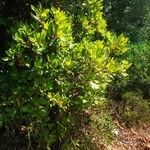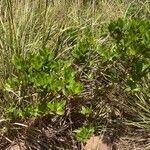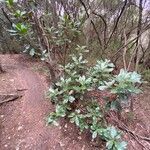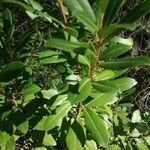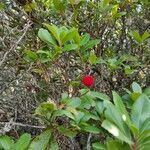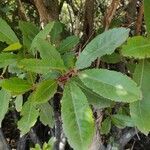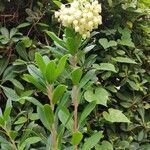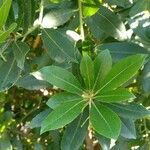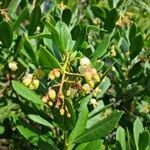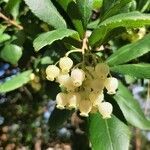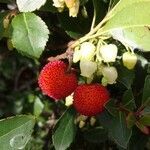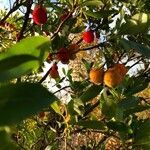A small tree. It can be 9 m high. The bark is dark grey-brown. It is rather fibrous and scaly. The trunk is short and the branches twisted. The smaller branches and twigs are reddish. The leaves are alternate and evergreen. The are narrowly oval and taper to the tip and narrow to the base. There are teeth around the edge. The leaves are dark green. The flowers are small and bell-shaped. They are white or pink. They occur in clusters. The fruits are strawberry-like. They are 2.5 cm across. They contain many seeds.
